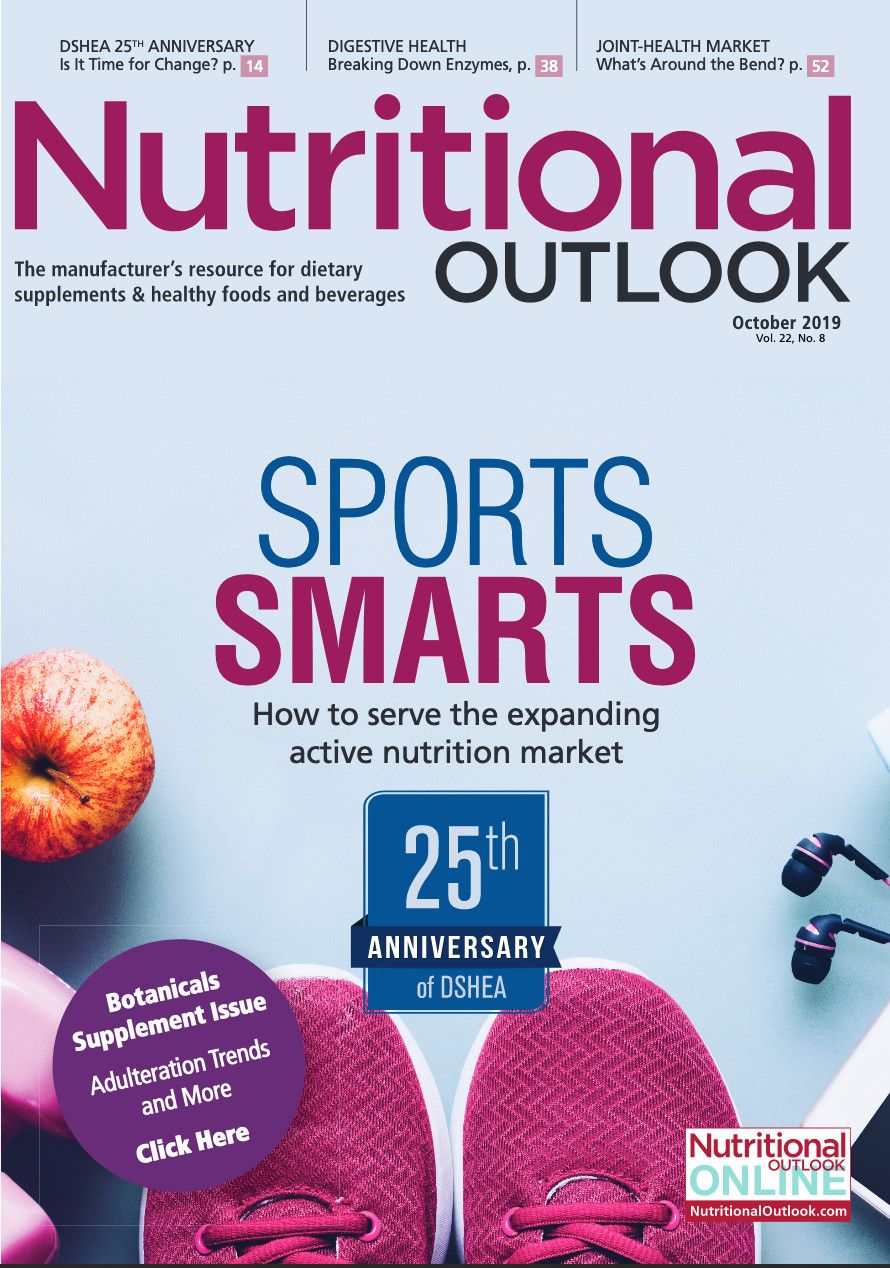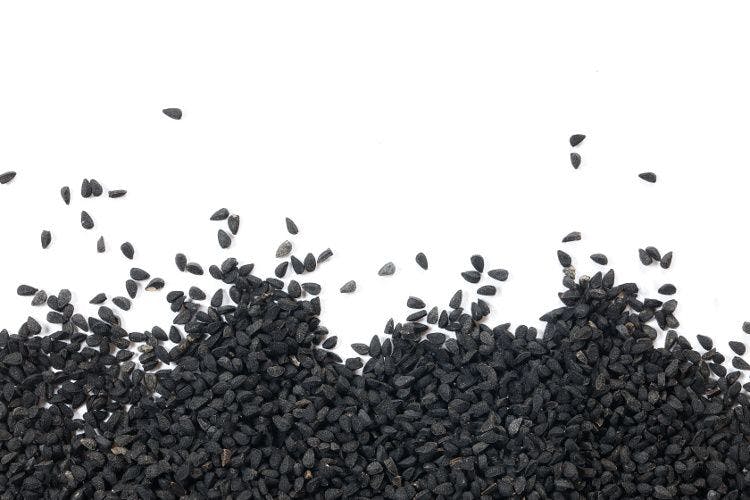Breaking down the enzyme market
Examining the catalysts driving sales growth
Photo © AdobeStock.com/arloo

The digestive enzyme market has grown significantly in recent years, and market researchers are predicting that this trend will continue. One market report released earlier this year by Reports and Data (New York City) estimates that the global digestive enzyme industry will be worth USD $1.2 billion by 2026, forecasting a 10% compound annual growth rate.1 Gene Bruno, MS, MHS, RH(AHG), senior director of formulation for NutraScience Labs (Farmingdale, NY), says that a growing population of senior citizens and the rising prevalence of gastrointestinal (GI) disorders are raising awareness among consumers about digestive health.
“A focus on preventative health management, as well as changing lifestyles and high disposable income, are contributing to the high growth rates,” Bruno says. “By far, the most popular digestive aids are those products that provide a blend of different enzymes formulated to help digest a broad range of foods.”
Bruno also notes that a consumer desire to change unhealthy eating habits is taking hold, which is prompting consumers to seek out enzymes for better digestive regulation. The National Institutes of Health estimates that 60 to 70 million Americans have some kind of digestive disease like diverticulitis or irritable bowel syndrome (IBS).2 Here are just some of the new trends and opportunities arising out of this increased consumer demand.
Branded, Concentrated Product Formulations
Enzyme products are diversifying their formulations, with the end result being a more segmented market occupied by various branded products. Also, Sam Michini, vice president of marketing and strategy for Deerland Probiotics & Enzymes (Kennesaw, GA), says that enzyme products today are more concentrated than they were in the past. A greater variety of enzyme material has allowed brands to formulate more specific and more potent products, Michini says, as well as different product types.
“Interestingly, brands are starting to add supplemental digestive enzymes to their OTC product lines, which shows increased consumer demand for enzyme products,” Michini explains. “There has also been more emphasis on clinically studied enzymes. The market is no longer based solely on who can provide the most potent enzymes. It’s also about who can provide the most scientifically supported enzymes.”
Michini says that enzyme manufacturers are now changing their product formulations to better meet the needs of specific customer segments. For instance, enzyme products today are exposed to fewer allergens during fermentation, use more label-friendly standardizing agents, and have overall cleaner labels.
Marketing Claims Target Specific Consumers
Michini says that supplement manufacturers are increasingly seeking out condition-specific enzymes to support digestion for consumers with digestive sensitivities. Consumers have learned much about the causes of digestive problems in the last ten years, which is why they’re now looking for supplements to resolve their complaints.
“People who have been diagnosed with celiac disease or who have reactions to lactose or gluten will stop consuming those ingredients,” Michini says, “but they also know that they should have some ‘backup’ support in the case of unintentional cross-contamination when eating away from home.”
At the other end of the spectrum are consumers who experience mild to moderate discomfort in response to gluten-heavy or dairy-laden food, Michini says. Consumers with food sensitivities represent a growing niche for enzyme brands, and these consumers are increasingly becoming more informed about products and formulations.
Products Evolve from Single-Ingredient to Blends
While early enzyme supplements may have been single-ingredient products, modern supplements are incorporating multiple enzymes in the same product. Shaheen Majeed, president worldwide of Sabinsa Corp. (East Windsor, NJ), says that enzyme blends are becoming more popular because of enzymes’ history as digestive supplements.
“People eat different foods that require different enzymes to digest, which is why consumers are looking for blends,” Majeed says. “For instance, Sabinsa’s patented multi-enzyme complex DigeZyme comprises five different enzymes: cellulase for fibrous food; lactase to manage lactose tolerance; and amylase, lipase, and protease for people who have difficulty digesting carbohydrates, fats, and proteins, respectively.”
Majeed also says that multi-enzyme blends tend to incorporate enzymes from different kinds of sources. While animal-derived enzymes previously led the market, Majeed says, the new market leaders incorporate enzymes from animal, plant, and microbial sources. He says that microbial enzymes in particular offer advantages over other kinds of enzymes. “Microbe-derived enzymes may be used at a lower dosage, provide a broader range of pH activity, and stay active at higher temperatures compared to animal-based enzymes. Microbes are used as a major source of enzymes for supplements, representing about 90% of all enzymes produced commercially for any purpose.”
Storage, Ingredient Interactions Matter
Enzymes are gaining popularity as supplements, but mainstream press is calling their consistency into question. One ConsumerLab.com report published in May 2019 analyzed the contents and bioactivity of 12 different enzyme supplements manufactured by 12 different brands. ConsumerLab reported that across these products, lipase activity ranged 25-fold, amylase activity ranged 50-fold, and protein digestion ranged 100-fold. The report also found that one product that claimed to contain lipase didn’t exhibit any lipase activity during testing.3
Majeed, though, says that proper ingredient processing and storage can prevent inconsistencies in ingredient concentration and lack of bioactivity. Enzymes in particular, he says, must be carefully prepared in order to retain their catalytic potential. Liquid products must be devoid of protease enzymes, Majeed says, as protease can degrade other enzymes.
“Supplements need to be formulated with components that can avoid enzyme denaturation, protect the active sites, and stabilize their function confirmation,” Majeed explains. “Along with choosing quality ingredients for formulations, brands also need reliable analytical methods to assess their catalytic activity.”
Enzymes to Diversify in the Future
Bruno says that the enzymes market will continue to evolve in the future, with product lines continuing to become more segmented to meet specific consumer needs. Food-specific enzymes, such as lactase and exo-peptidase complexes, are growing to meet consumer demand for specific functionality. However, Bruno notes that blends are also proving quite popular, with the bestselling products still consisting of multi-enzyme supplements that can digest a broad range of foods. While at face value these may seem like contradictory statements, it makes sense that a rising tide of consumer demand would lift all boats, single-ingredient and blended products included. As consumers learn more about digestive enzymes, expect new market opportunities to emerge.
Sidebar 1: Enzyme Complexes Reduce Pain in Study
In a double-blind, placebo-controlled clinical trial performed by Sabinsa Corp. (East Windsor, NJ), enzymes were found to reduce pain. The study followed 20 male participants engaging in standardized eccentric exercise. Participants took either one 50-mg dose of Sabinsa’s branded DigeZyme three times per day for three days (n = 10) or a matching placebo (n = 10). Relative to the placebo group, the experimental group reported a decrease in exercise-associated pain and tenderness, as well as reductions in McGill Pain Questionnaire scores (p<0.05) and a declining trend in creatine kinase and lactate dehydrogenase.4
Sidebar 2: Blended Products Offer Better Outcomes
As consumers have gained more awareness of gluten and dairy sensitivities, demand for digestive enzymes has increased. Sam Michini, vice president of marketing and strategy for Deerland Probiotics & Enzymes (Kennesaw, GA), says that many people who have dairy sensitivities don’t find relief from traditional lactase supplements, indicating a protease deficiency. Deerland’s branded Dairylytic supplement contains both lactase and protease to break down both lactose and milk proteins.
Sidebar 3: Peptidase Complex Benefits Non-Celiac Gluten Sensitivity
Three capsules per day of Deerland Probiotics & Enzymes’ (Kennesaw, GA) patented Glutalytic, an endo-/exo-peptidase complex, was shown in one Deerland-sponsored randomized double-blind placebo-controlled trial (n=11) to reduce non-celiac gluten sensitivity symptoms after one week.5 Gene Bruno, MS, MHS, RH(AHG), senior director of formulation for NutraScience Labs (Farmingdale, NY), says this study shows that peptidase complexes are effective in reducing digestive issues like stomach pain, nausea, and bloating in response to gluten ingestion.
References:
- Reports and Data. “Digestive Enzymes Market to Reach USD 1,210.1 Million by 2026.” Published online April 8, 2019.
- National Institutes of Health, U.S. Department of Health and Human Services. Opportunities and Challenges in Digestive Diseases Research Recommendations of the National Commission on Digestive Diseases. March 2009. NIH Publication 08–6514.
- ConsumerLab.com. “ConsumerLab Tests Reveal Big Differences in Digestive Enzyme Supplements.” Published online May 15, 2019.
- Majeed et al. “Multi-enzyme complex for the management of delayed onset muscle soreness after eccentric exercise: A randomized, double blind, placebo controlled study.” Sports Nutrition and Therapy, vol. 1, no. 3 (2016): 113
- Hudson M et al. “Glutalytic clinical trial for normal consumption of gluten containing foods.” Kennesaw State University Faculty Publications. Published online April 1, 2015.

Polyphenols: The next generation of prebiotics is ready for liftoff
April 21st 2025Explore the prebiotic health benefits of polyphenols and the positive impact they may have on digestive and immune health. Polyphenols, such as those found in European black elderberry, may be an ideal solution for manufacturers trying to break into the digestive health space.

.png&w=3840&q=75)

.png&w=3840&q=75)



.png&w=3840&q=75)



.png&w=3840&q=75)

















